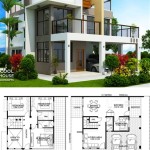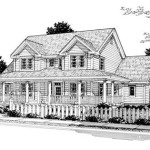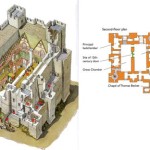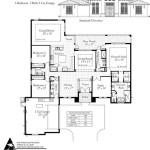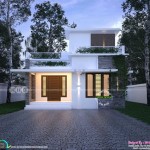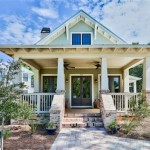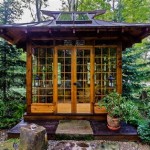House Plans with Nice Kitchens
The kitchen is often considered the heart of the home, a gathering place for family and friends. Therefore, prioritizing kitchen design when considering house plans is a crucial step for many homeowners. Understanding the elements that contribute to a "nice" kitchen can vary depending on individual preferences and lifestyles. However, some common features are consistently sought after, including efficient layouts, ample storage, and quality appliances.
One popular kitchen layout is the "work triangle," connecting the sink, refrigerator, and stove. This design minimizes unnecessary steps during meal preparation and creates an efficient workspace. Variations of the work triangle, such as the "work zone" concept, further customize the layout based on specific needs, like baking or entertaining. An island can enhance the work triangle by providing additional counter space and storage, as well as a casual dining area.
Storage is another critical aspect of a well-designed kitchen. Cabinets and drawers should maximize available space and be strategically placed for easy access to frequently used items. Pantries, whether walk-in or built-in, offer dedicated storage for dry goods and small appliances. Open shelving can provide a stylish way to display attractive cookware or decorative items, but requires careful organization to avoid a cluttered appearance.
Appliance selection significantly impacts both the functionality and aesthetics of the kitchen. High-quality appliances contribute to the longevity and efficiency of the space. Considering the size and capacity of appliances is crucial, ensuring they meet the needs of the household. Integrated appliances, such as built-in refrigerators and dishwashers, create a seamless and streamlined look.
Lighting plays a crucial role in creating a welcoming and functional kitchen. Natural light from windows or skylights is highly desirable. Task lighting, such as under-cabinet lighting, illuminates work surfaces for safe and efficient food preparation. Ambient lighting, like pendant lights or recessed lighting, provides overall illumination and sets the mood for the space.
Ventilation is an essential consideration for kitchen design. A properly sized range hood effectively removes cooking odors and fumes, improving indoor air quality. Exterior venting is generally preferred, but recirculating range hoods can be an alternative when exterior venting isn't feasible.
Material selection greatly influences the overall aesthetic and durability of the kitchen. Countertops, flooring, and backsplashes should be chosen based on both their appearance and their ability to withstand the wear and tear of daily use. Durable materials like granite, quartz, and porcelain are popular choices for countertops, offering resistance to stains, heat, and scratches. Flooring options like hardwood, tile, and vinyl offer varying levels of durability and maintenance requirements.
Considering the flow of traffic within the kitchen and its connection to adjacent spaces is also an important factor. An open-concept kitchen, seamlessly integrated with the dining or living area, promotes social interaction and creates a sense of spaciousness. However, some homeowners may prefer a more traditional, closed-off kitchen for greater privacy and noise control.
The size and shape of the kitchen should be proportionate to the overall size of the house and reflect the lifestyle of the occupants. A large family might require a spacious kitchen with ample seating, while a smaller household might find a more compact kitchen perfectly adequate. Considering future needs and potential changes in lifestyle can help ensure the kitchen remains functional and enjoyable for years to come.
Accessibility is another important aspect to consider, especially for multi-generational households or individuals with mobility limitations. Features like adjustable countertops, roll-under sinks, and wider doorways can make the kitchen more accessible and comfortable for everyone.
Budget is a significant factor in any home building or renovation project. Prioritizing essential features and making informed decisions about materials and appliances can help manage costs without compromising functionality or aesthetics. Researching different brands and comparing prices can help identify cost-effective options without sacrificing quality.
Ultimately, the definition of a "nice" kitchen is subjective and depends on individual preferences and needs. However, by carefully considering the elements discussed above – layout, storage, appliances, lighting, ventilation, materials, traffic flow, size, accessibility, and budget – homeowners can create a kitchen that is both beautiful and functional, truly the heart of their home.

Trending House Plans With Large Kitchens Houseplans Blog Com

Nice Large Kitchen House Plans Floor Ranch

Trending House Plans With Large Kitchens Houseplans Blog Com

Trending House Plans With Large Kitchens Houseplans Blog Com

Trending House Plans With Large Kitchens Houseplans Blog Com

Kitchen Floor Plan Plans With Island The House Designers

Trending House Plans With Large Kitchens Houseplans Blog Com

10 Floor Plans With Great Kitchens Builder

Contemporary Home Plans With Great Kitchens Houseplans Blog Com

Trending House Plans With Large Kitchens Houseplans Blog Com

